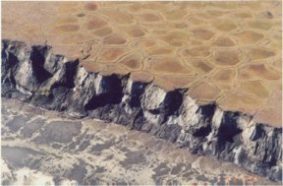Digging for ancient DNA
Soil has yielded identifiable DNA of animals and plants that lived up to 400,000 years ago.
By Emily Sohn
In the movie Jurassic Park, scientists discover fossilized insects that had eaten dinosaur blood just before they died. The dino blood is full of DNA—the instruction manual of life—and the scientists use some of those tiny molecules to bring dinosaurs back to life.
One of the reasons this could never really happen is that DNA is incredibly fragile. Every speck of dino DNA has probably broken down during the 65 million years since the giant reptiles disappeared.
 |
|
Soil from this permafrost plain, shown in an aerial shot along Siberia’s Arctic coast, has yielded identifiable DNA of animals and plants that lived up to 400,000 years ago.
|
| Science |
But now, new DNA discoveries are opening windows into ancient worlds. In tiny samples of soil from New Zealand and Siberia, molecular biologist Eske Willerslev of the University of Copenhagen and his colleagues have found the oldest bits of identifiable DNA ever.
In Siberia, the researchers drilled into ice and dirt dating back 2 million years. In sediment that was 30,000 years old, they found DNA from eight animal species, including horses, reindeer, bison, and woolly mammoths. In DNA extracted from 400,000-year-old soil, the researchers found at least 28 species of trees, shrubs, herbs, and mosses.
Willerslev guesses that the DNA made its way into the soil through animal poop. He hopes the new findings will help reveal what life was like long ago.
Unfortunately, the chances of any DNA in dinosaur poop lasting that long are pretty slim.







